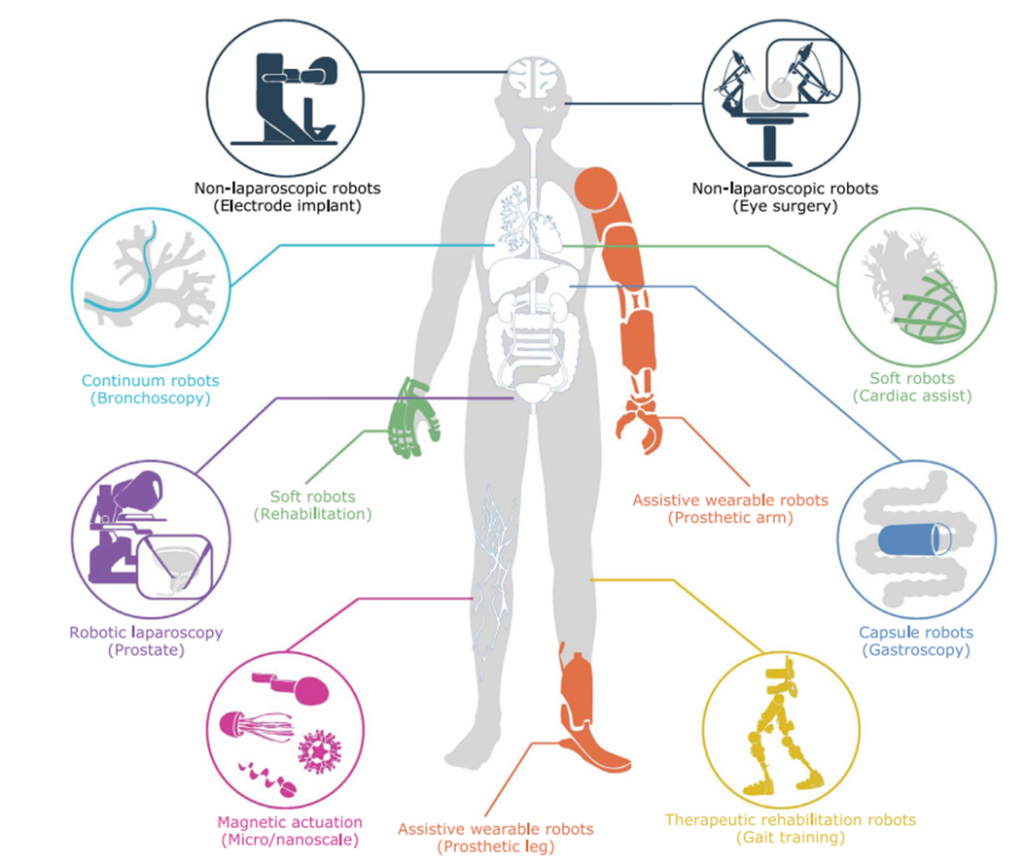Journal club: Dupont et al, 2020.
A decade retrospective of medical robotics research from 2010 to 2020
Pierre E. Dupont, Bradley J. Nelson, Michael Goldfarb, Blake Hannaford, Arianna Menciassi, Marcia K. O’Malley, Nabil Simaan, Pietro Valdastri, Guang-Zhong Yang
Science Robotics 2021; Vol 6, Issue 60
DOI: 10.1126/scirobotics.abi8017
In the last thirty years, publications on the medical robotics area have grown exponentially, from less than 10 in 1990 to more than 5200 in the 2020 (80% of them published in the last ten years). In the paper discussed in this journal club session, leading experts scientists provide a summary of the main accomplishments achieved in the last decade in the medical robotics field and their vision on what the future holds. The main idea behind this review article is to inspire the researchers to “foster an entrepreneurial spirit to reduce the widening gap between research and translation”: one the goals of the ATLAS project.
Considering the most highly cited papers on the medical robotics area by searching on Web of Science, eight main topics of interest have been defined by the authors:
- laparoscopic robots – most successful story of medical robotics thanks to the Da Vinci robot by Intuitive Surgical;
- non-laparoscopic robots – e.g., electrode implantation in the brain;
- assistive wearable robots – able to augment or replace limbs motion in the cases of movements impairment or amputation;
- therapeutic rehabilitation robots – assist patients with neurological injuries in performing repetitive movements to learn again tasks;
- capsule robots – pill-sized devices for endoscopic diagnosis and treatment of the gastrointestinal tract;
- magnetic actuation – enables the remote generation of forces and torques inside the body to actuate an untethered robot or to orient the tip of a catheter;
- continuum robots – robotic versions of manual medical instruments;
- soft robots – used, e.g., to create soft sleeves to assist heart contraction and for hand rehabilitation.
For each of these topics, the authors highlight the main contributions, both commercial and academic, of the last ten years and what are the challenges to be addressed in the next decade. Attention is posed to the idea of developing an understanding of how robots and their underlying technologies add value in medicine, by both enabling new types of interventions (e.g., reaching unexplored areas of the small bowel with capsule endoscope) and providing new improved way for already existing procedures (e.g., automatizing part of a procedure to increase precision and reduce the cognitive and physical load of the clinicians). New sensing technologies, localization and control strategies, automation algorithms and intuitive and ergonomic interfaces are identified as the enabling technical factors of the next generation medical robots. However, close collaboration between technology researchers, clinicians, regulators, investors, and the business community is considered the most important aspect enabling a successful translation of the technology from research to the market, as constantly encouraged and implemented by the ATLAS community.

